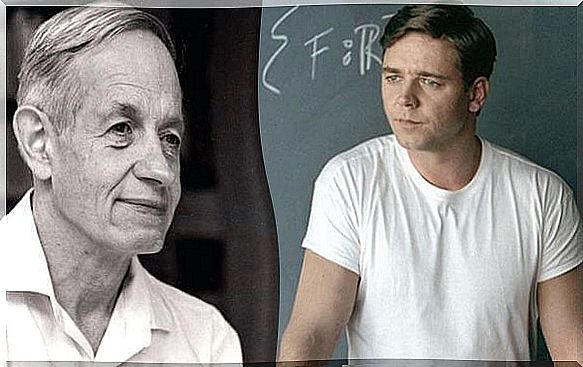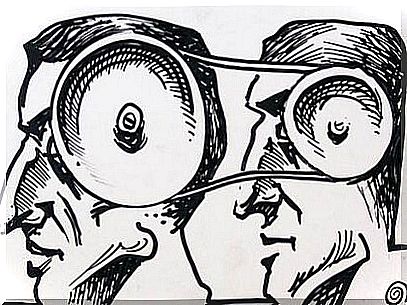The Teachings Of “A Beautiful Mind”

John Nash, a math genius who inspired the fantastic movie “A Beautiful Mind”, died last May.
Based on the novel of the same name by Sylvia Nasar, the feature film, produced in 2001, proved to be a real success: it obtained 4 Oscars and an incredible number of fans. The film, which sees the actor Russel Crowe in the title role, offers the audience a great message expressed in a very simple way, which invites them to try to overcome their limits, whatever they may be.
For those who do not know the story of John Nash …
John Nash was 30 years old when he was diagnosed with paranoid schizophrenia: the weight of a terrible disease hit the healthy ambition of his privileged mind.
His was a brilliant mind, unique and promising when his misfortune began ; nevertheless, nothing stopped him from continuing to pursue his dreams. After years of terrible treatments aimed at helping him overcome his mental illness, John Nash was able to keep his symptoms at bay.
He learned to live with the voices inside his head and the hallucinations. John heard murmurs and saw things constantly, but he managed his situation.
The work he had to carry out on himself was extremely great and hard until the last moment: it is clear that living without being able to distinguish reality from imagination is very complicated. However, Nash’s brilliant mind succeeded.
Nash won the Nobel Prize for economics in 1994 thanks to his “game theory”, still in use today and useful in terms of game strategies. John battled paranoid schizophrenia all his life and succeeded: he was able to live a life completely different from what it had been anticipated due to the disease.
His death, as well as his life, was unexpected : on May 23, 2015, Nash died along with his wife, both victims of a car accident.

An example of tenacity and hope
We owe a lot to this man, not only for his contribution to science, but also for telling us his story, which teaches us that, working with what we have inside, all minds are wonderful.
John clung to his wits and coexisted with the voices inside his head even though they stunned him; his struggle was not easy. However, he came to understand that the solution to living was acceptance and proved it to us.
An inspiration came to him and he was able to create a stable world in a changing place and, what at first was a struggle, turned into a safe home to live in. Despite his limitations, Nash got a job as an MIT professor and, at the same time, recovered the genius that his mental problem had cut short.
John Forbes Nash learned to live with schizophrenia all his life, applying a rule that “every problem has a solution”. It may not apply to everyone with a mental disorder, but there is certainly a way to incorporate it into our life.
Living knowing that most of the pain we feel is inevitable should be a premise in everyone’s mind. Sure, John showed us the trick to enjoying life: accept, let go, and take action.

Can schizophrenia be cured or not?
Sometimes, what a person needs is not a bright mind that speaks to him, but a patient heart that listens to him.
According to journalist and researcher Robert Whitaker, for a long time in Western Lapland (Finland) there was the highest rate of schizophrenia. To give you an idea, roughly 70,000 people live there and, in the decade of the 1970s, more than 25 new cases of schizophrenia emerged every year: double or triple the amount of the rest of Finland and Europe.
In 1969, schizophrenia expert Yrjo Alanen entered the psychiatric hospital in Turku (Finland). At that time, few psychiatrists saw psychotherapy as a chance to recover from psychosis.
However, Alanen argued that the hallucinations and paranoid delusions of schizophrenic patients, when analyzed very precisely, contained sensible stories.
Thus, the hospital professionals began to engage in the work of listening to patients and their families. They created a new treatment modality which took the name of “Therapy adapted to the patient’s needs”. They considered the fact that each patient represented a world of their own and worked hard to create a specific treatment for each case.
Some patients needed to be hospitalized, but others didn’t; furthermore, some patients could afford to ingest limited doses of psychiatric drugs (such as anxiolytics or antipsychotics) and others could not.

In this way, the doctors in question personalized and meticulously worked each case, aware of the needs of each individual and each family. The decisions regarding the treatments to be adopted were taken as a team, weighing every single opinion of the experts present.
Therapeutic sessions were not aimed at reducing psychotic symptoms, but focused attention on the patients’ previous successes, thus strengthening their ability to self-control. In this way, the patient did not lose hope of being like everyone else, of having a normal life and of living in a condition other than isolation.
In recent years, the so-called “open dialogue” therapy has transformed the statistics regarding the presence of psychopathy in the population of Western Lapland. The cost of psychiatric services in the region dropped dramatically and is currently the lowest-cost mental health sector in Finland.
While previously there were 25 new cases of schizophrenia per year, nowadays 2 or 3 are detected in the same time frame. It is therefore evident that alternative methods exist : there are other types of treatments, in addition to those that are traditionally administered, suitable for people suffering from schizophrenia or other psychoses, which can guarantee them a different life.
Patients are frequently forced into aggressive drug therapies or electroshock; moreover, most likely, the external gazes directed towards them are filled with pain, fear and rejection. These two factors are sufficient for bankruptcy to be assured.
This is why it is necessary to remember that there are better ways of acting. If society constantly makes them feel like sick people, they won’t be allowed to see the light at the end of the tunnel, which actually exists for everyone.









